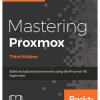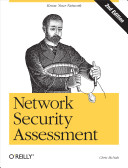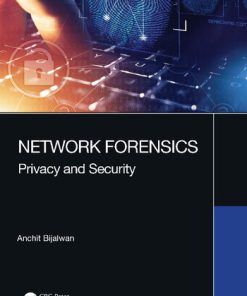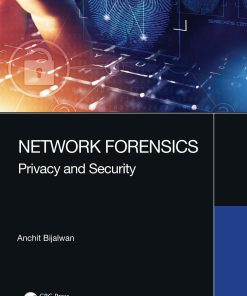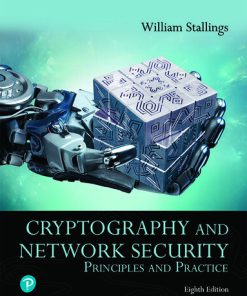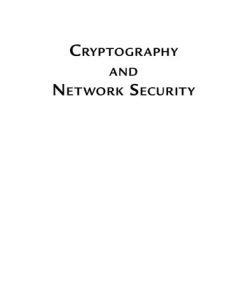Network Security and Cryptography 1st editon by Sarhan Musa 1683928814 9781683928812
$50.00 Original price was: $50.00.$25.00Current price is: $25.00.
Network Security and Cryptography 1st editon by Sarhan Musa – Ebook PDF Instant Download/Delivery: 1683928814, 9781683928812
Full download Network Security and Cryptography 1st editon after payment
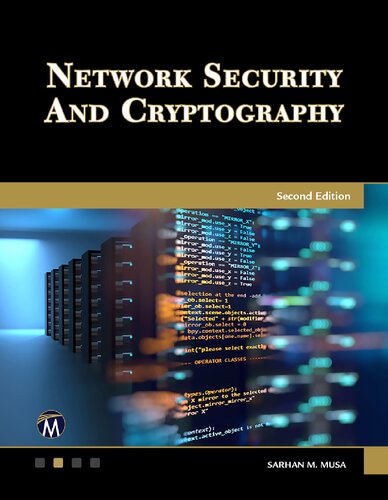
Product details:
ISBN 10: 1683928814
ISBN 13: 9781683928812
Author: Sarhan M. Musa
This new edition introduces the basic concepts in computer networks, blockchain, and the latest trends and technologies in cryptography and network security. The book is a definitive guide to the principles and techniques of cryptography and network security, and introduces basic concepts in computer networks such as classical cipher schemes, public key cryptography, authentication schemes, pretty good privacy, and Internet security. It features a new chapter on artificial intelligence security and the latest material on emerging technologies, related to IoT, cloud computing, SCADA, blockchain, smart grid, big data analytics, and more. Primarily intended as a textbook for courses in computer science, electronics & communication, the book also serves as a basic reference and refresher for professionals in these areas.
Network Security and Cryptography 1st Table of contents:
Chapter 1: Overview of Computer Networks
1.1 Introduction
1.2 Open Systems Interconnection (OSI) Model
1.3 Transmission Control Protocol/Internetworking Protocol (TCP/IP) Model
1.4 Hierarchical Model
1.5 Computer Network Equipment
1.6 Computer Network Types
1.7 Computer Network Topology
1.8 Exercises
Chapter 2: Mathematical Foundations for Computer Networks
2.1 Introduction
2.2 Probability Fundamentals
2.3 Random Variables
2.4 Discrete Probability Models
2.5 Continuous Probability Models
2.6 Transformation of a Random Variable
2.7 Generating Functions
2.8 Central Limit Theorem
2.9 Classification of Random Processes
2.10 Statistics of Random Processes and Stationarity
2.11 Time Averages of Random Processes and Ergodicity
2.12 Multiple Random Processes
2.13 Sample Random Processes
2.14 Renewal Processes
2.15 Kendall’s Notation
2.16 Little’s Theorem
2.17 M/M/1 Queue
2.18 M/M/1 Queue With Bulk Arrivals/Service
2.19 M/G/1 Queueing SYSTEM
2.20 M/Ek/1 Queueing SYSTEM
2.21 Networks of Queues
2.22 Jackson Networks
2.23 Exercises
Chapter 3: Overview of Cryptography
3.1 Introduction
3.2 Basic Terms Related to Cryptography
3.3 Requirements of Secure Communication
3.4 OSI Security Architecture
3.5 Categories of Cryptographic Systems
3.6 Symmetric (or Conventional) Encryption Model
3.7 Exercises
Chapter 4: Mathematical Foundations for Cryptography
4.1 Introduction
4.2 Introduction to Groups, Rings, and Fields
4.3 Modular Arithmetic
4.4 Introduction to Primes and Co-Primes
4.5 Euclid’s Algorithm To Determine GCD
4.6 Extended Euclid’s Algorithm
4.7 Galois Finite Fields
4.8 Fermat’s Little Theorem
4.9 Euler’s Totient Function
4.10 Euler’s Theorem
4.11 Prime Numbers
4.12 Discrete Logarithms
4.13 Primality Testing
4.14 Chinese Remainder Theorem
4.15 Exercises
Chapter 5: Classical Cipher Schemes
5.1 Introduction
5.2 Classical Substitution Ciphers
5.3 Transposition Ciphers
5.4 Steganography
5.5 Exercises
Chapter 6: Modern Symmetric Ciphers
6.1 Introduction
6.2 Some Basic Concepts for Symmetric Ciphers
6.3 Claude Shannon’s Theory of Diffusion and Confusion
6.4 Feistel Cipher
6.5 Data Encryption Standard (DES)
6.6 Avalanche Effect
6.7 Multiple DES
6.8 International Data Encryption Algorithm (IDEA)
6.9 Advanced Encryption Standard (AES)
6.10 Key Management: Symmetric Encryption
6.11 Pseudo-Random Number Generators
6.12 Exercises
Chapter 7: Public-Key Cryptography for Data Confidentiality
7.1 Introduction
7.2 Requirements of Public-Key Cryptography
7.3 Data Confidentiality Using Public-Key Cryptography
7.4 RSA Algorithm
7.5 Key Management Using Public-Key Cryptography
7.6 El-Gamal Encryption Scheme
7.7 Elliptic Curve Cryptography (ECC)
7.8 Exercises
Chapter 8: Authentication Schemes
8.1 Introduction
8.2 What is Message Authentication?
8.3 Types of Authentication Services
8.4 Application Modes of Digital Signatures
8.5 Authentication Protocols
8.6 Message Digest (Hash Function) Algorithms
8.7 Secure Hash Algorithm (SHA-1)
8.8 Digital Signature Schemes
8.9 Exercises
Chapter 9: Centralized Authentication Service
9.1 Introduction
9.2 Centralized Authentication Service
9.3 Motivation for Centralized Authentication Service
9.4 Simple Authentication Exchange in Open Environment
9.5 Architecture of Kerberos V.4
9.6 Exercises
Chapter 10: Public Key Infrastructure (PKI)
10.1 Introduction
10.2 Format of X.509 Certificate
10.3 Hierarchical Organization of Certification Authorities (CAs)
10.4 Creation of Certificates’ Chain for CA’s Signature Verification
10.5 Revocation of X.509 Certificates
10.6 Authentication Procedures Defined in X.509
10.7 Exercises
Chapter 11: Pretty Good Privacy
11.1 Introduction
11.2 Services Supported by Pretty Good Privacy (PGP)
11.3 Radix-64 (R64) Transformation
11.4 Concept of the Public Key Ring and Private Key Ring in PGP
11.5 S/MIME (Secure/Multipurpose Internet Mail Extension)
11.6 Exercises
Chapter 12: Internet Security Services
12.1 Introduction
12.2 Internet Protocol Security (IPSec)
12.3 Services Provided by IPSec
12.4 Security Association (SA)
12.5 Security Policies
12.6 ISAKMP
12.7 Secure Socket Layer/Transport Layer Security (SSL/TLS)
12.8 Secure Electronic Transaction
12.9 Key Features of SET
12.10 Exercises
Chapter 13: System Security
13.1 Introduction
13.2 Intruders
13.3 Intrusion Detection
13.4 Password Management
13.5 Malicious Programs
13.6 Anti-Virus Scanners
13.7 Worms
13.8 Firewall
13.9 Types of Firewalls
13.10 Trusted Systems
13.11 Exercises
Chapter 14: Security of Emerging Technology
14.1 Introduction
14.2 Security of Big Data Analytics
14.3 Security of Cloud Computing
14.4 Security of Internet of Things (IoT)
14.5 Security of Smart Grids
14.6 Security of SCADA Control Systems
14.7 Security of Wireless Sensor Networks (WSNs)
14.8 Security of Smart City
14.9 Security of Blockchain
14.10 Exercises
Chapter 15: Artificial Intelligence Security
15.1 Introduction
15.2 Machine Learning
15.3 Types of Machine Learning
15.4 Deep Learning
15.5 Types of Deep Learning
15.6 AI for Intrusion Detection System
15.7 Exercises
People also search for Network Security and Cryptography 1st:
network security 1.0 final exam
network security 1.0 practice final exam
network security 101
a network security analyst may
a cryptonet
Tags:
Sarhan Musa,Network Security,Cryptography
You may also like…
Computers - Security
Network Security Assessment Know Your Network Second Edition Chris Mcnab
Computers - Programming
Computers - Cryptography
Computers - Security
Computers - Computer Science
Network Forensics: Privacy and Security 1st Edition Anchit Bijalwan
Computers - Security
Network Forensics Privacy and Security 1st Edition Anchit Bijalwan
Computers - Security
Cryptography and Network Security: Principles and Practice, 8/e 8th Edition William Stallings
Computers - Networking


